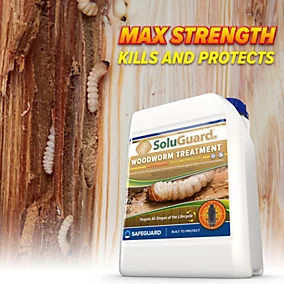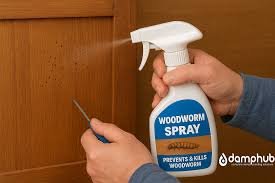When it comes to pests that threaten the stability of your home, woodworms are often overlooked, but they can cause serious damage. These silent destroyers burrow deep into wood, slowly weakening structural beams, furniture, and floors. Identifying a woodworm infestation early can help prevent extensive damage and costly repairs. In this guide, we’ll walk you through everything you need to know about woodworms—from recognizing the signs to effective treatments. For expert pest control solutions for woodworms, visit Woodworms.
What Are Woodworms?
Woodworms are the larvae of wood-boring beetles that feast on wood. The beetles lay eggs in cracks in the wood, and once the eggs hatch, the larvae burrow deep inside the wood to feed. This feeding causes the wood to weaken, leading to structural damage. While the beetles themselves are visible, the most damage is done by their larvae, which can live inside the wood for several years.
Older homes are more prone to woodworm infestations due to the age of the wood and its vulnerability to dampness. However, even newer homes with poorly ventilated areas can fall victim to these pests if conditions are favorable. Woodworms are often found in attics, basements, and wooden beams.
Recognizing the Signs of Woodworm Infestation
Catching a woodworm infestation early is crucial in minimizing damage. Some common signs of an infestation include:
-
Tiny Exit Holes: Look for small, round holes (1-2mm in diameter) where adult beetles have exited the wood.
-
Powdery Dust or Frass: This is the fine dust or frass excreted by the larvae as they burrow through the wood. It may appear around exit holes.
-
Soft and Crumbling Wood: Infested wood becomes soft and weak. In extreme cases, it can break apart when touched.
-
Visible Beetles: If you notice small brown or black beetles around your home, it may indicate a woodworm infestation.
Why Woodworms Are a Problem
Woodworms can seriously undermine the structural integrity of your home. The larvae feed on the wood, causing it to weaken over time. If left untreated, this damage can lead to issues with floors, beams, and furniture, requiring costly repairs or replacements. Additionally, because the damage happens inside the wood, it often goes unnoticed until it’s too late.
Furthermore, woodworms can spread from one wooden structure to another, which means that an infestation can quickly become widespread if not treated. Therefore, detecting and treating woodworm infestations early is essential.
How to Prevent Woodworm Infestations
Preventing woodworms is far more effective than dealing with an infestation after it occurs. Here are several steps you can take to protect your home:
-
Control Moisture Levels: Woodworms thrive in damp environments. Keep your home dry by improving ventilation, especially in basements, attics, and crawl spaces. Use dehumidifiers where necessary.
-
Treat New Wood: If you’re installing new wooden furniture or beams, treat them with a wood preservative to prevent future infestations.
-
Conduct Regular Inspections: Inspect wooden areas in your home for signs of woodworms, particularly in older homes. The earlier you spot a problem, the easier it will be to manage.
Effective Treatment Methods for Woodworms
If you’ve discovered woodworms in your home, there are several treatment options available to eliminate the infestation and prevent further damage.
1. Chemical Treatments
Chemical insecticides are commonly used to treat woodworms. These treatments penetrate the wood and kill the larvae. They can be applied with a brush or spray. While effective, they can be harmful to humans and pets, so it’s essential to follow the manufacturer’s safety instructions.
2. Fumigation
For large-scale infestations, fumigation might be required. This involves sealing off the affected area and using a gas to kill both the larvae and adult beetles. Fumigation is effective for extensive woodworm problems that affect large sections of the house.
3. Boric Acid
Boric acid is a natural alternative that is less toxic than chemical treatments. It can be applied directly to the wood to kill the larvae. It’s a safe option for homes with children or pets and is effective at eliminating woodworms without harsh chemicals.
4. Professional Help
For severe infestations, it’s always best to call in a professional pest control service. Pest control experts have the experience and tools necessary to tackle large infestations and prevent recurrence.
Repairing Woodworm Damage
Once the woodworm infestation is under control, repairing the damage is the next step. Minor damage can often be fixed by filling the holes with wood filler. However, more severe infestations may require the replacement of affected beams or furniture. If the damage is extensive, especially to structural wood, consult a professional for repairs.
Conclusion
Dealing with woodworms in your home requires swift action to prevent further damage. Early detection and treatment are key to protecting your property. If you’re dealing with a woodworm infestation, there are several effective methods for eliminating the pests and repairing the damage. For more information on how to manage woodworms and ensure the safety of your home, visit Woodworms, your trusted guide for expert pest control.


